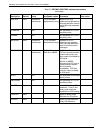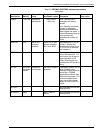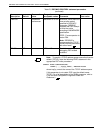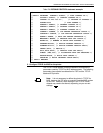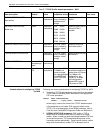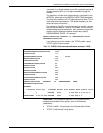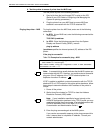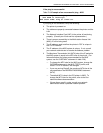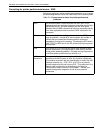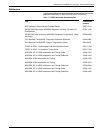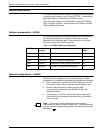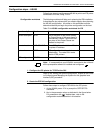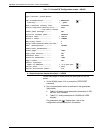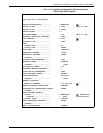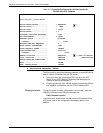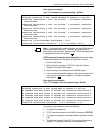
DEFINING THE PRINTER TO THE HOST: TCP/IP ATTACHMENT
E-16 XEROX DOCUPRINT 96/4635/180 IPS INSTALLATION PLANNING GUIDE
Correcting for printer performance issues – MVS
Should you notice any printer performance problems—e.g., through-
put speed degradation, check the areas listed in the following table.
Table E-11.Components to check for printer performance
problems
MVS On the MVS system, ensure that both the PSF and TCP/IP
address spaces are receiving a high level of service, are at a high
dispatching priority, and their datasets and the JES2 spool
datasets are on DASD volumes that have low competing activity
from other applications and from other DASD volumes on the
same path.
Printer Ensure that the Maximum Transmission Unit size (MTU) is as
large as possible. A small MTU size increases the number of
packets that are transmitted, allowing greater chances of
degradation throughout the network. Increasing the MTU size in
both TCP/IP for MVS and in the IPS printer may improve printer
performance.
LAN If the printer is on a LAN that also has a large number of other
devices attached to it, the high levels of traffic on the LAN can
cause printer speed degradation. Consider moving the printer to
a LAN that does not have so much activity on it.
LAN-to-host
attachment
If the speed of the link connecting the LAN with the printer
attached to the MVS system is slow, this could be a bottleneck.
This could be a concern with any configuration in which the LAN-
attached controller (i.e., 3745, 3172, or 3174) is not directly
channel-attached to the host running PSF. This could occur in a
Remote LAN configuration as discussed in the Network
Configurations section, earlier in this chapter. Review your
network configuration diagrams to look for any potential
bottlenecks.



